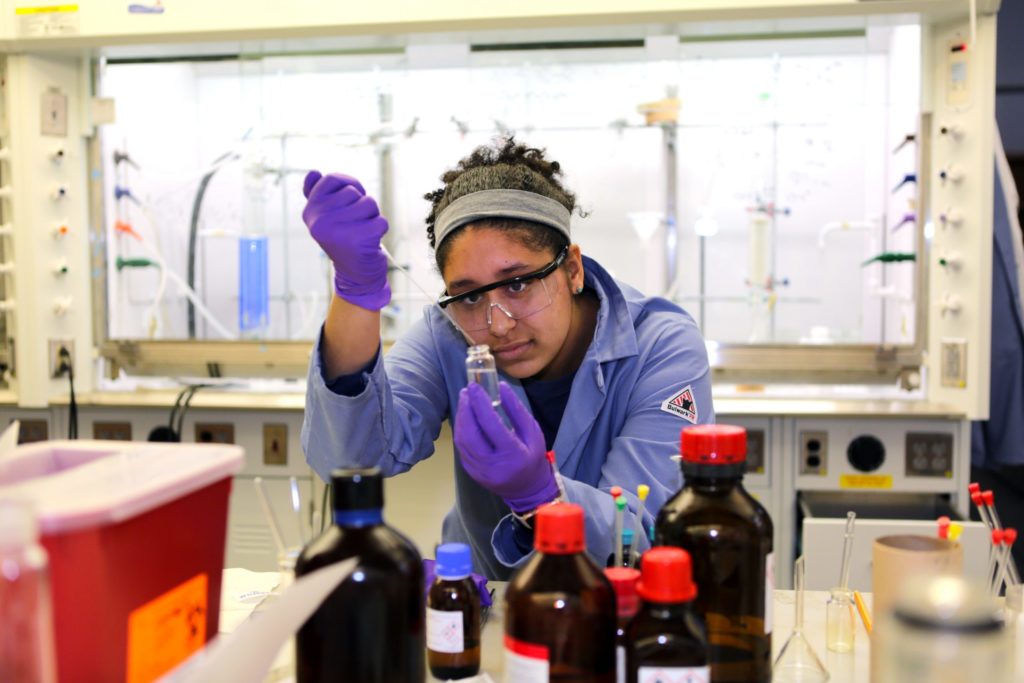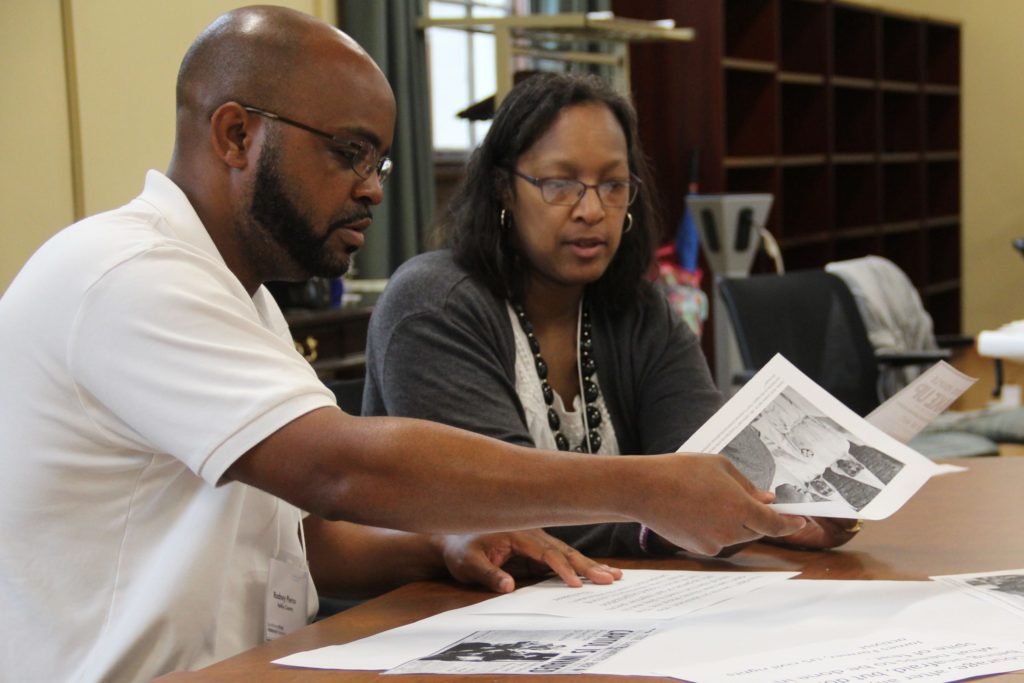Most of what you see at a theatrical performance can’t be purchased in a store. Each piece is specifically designed, created, and modified for the actor who will wear it on stage. What does that involve? Just ask the team at the PlayMakers Repertory Company costume shop.
Lauren Woods holds her breath. She snips a thread and then pulls it out slowly, exhaling as she continues to disassemble the 1950s cheetah-skin coat. Working with real fur is tricky — made of protein, it deteriorates over time, and each additional stitch makes it more fragile.
“You could literally rip it in half if you aren’t careful,” Woods, a second-year graduate student in UNC’s costume production program, explains. “Patience and dexterity played a huge role in making that costume.”
Woods transformed the vintage cape into a fitted crop top used for a costume in PlayMakers Repertory Company’s fall production, “Native Son.” The story takes place in 1930s Chicago and follows Bigger Thomas, a black man who accidentally kills a wealthy white woman. This particular piece was designed for a classic bombshell blond character.
“It was a jungle look that was based on Jane from the 1930s film ‘Tarzan.’ I had to go back and look at old posters from the movies that came out then and drape something that would coincide with it,” Woods says.
Research plays a huge role in creating the costumes for a production, Woods adds, especially when the show takes place in a different era.
“Students figure those things out by looking at the designer’s sketch and vintage patterns or books that have patterns of dresses from the 1930s,” says Triffin Morris, head of the costume production program in the Department of Dramatic Art and costume director for PlayMakers. “We also have a collection of actual vintage garments that have been donated over time that are resources.”
The costume designer works in collaboration with the director to create drawings of the costumes for a show. The draper uses those images, along with fabrics selected by the designer and the measurements of the actors, to make the final product. “We’re the engineers,” Morris says. “Most of what you see on stage can’t be purchased in a store.”
From shop to stage
The actors’ movements on stage play just as big of a role in costume production as the era. The actress who wore the cheetah-skin costume, for example, had to twirl around and then jump onto a box. Her outfit needed to be loose enough to allow movement, but securely fitted as to not shift too much. And it had to be easy to take on and off in between scenes, which meant replacing delicate zippers and buttons with snaps.
To make the Tarzan top more functional, Woods backed it with a heavy cotton for support and then added a zipper. For the bottom, Bobbi Owen — the costume designer — selected a wrap skirt, knowing the actress would have to playfully jump from one box to another on stage.
Students who work in the costume shop already have a lot of know-how. “They arrive having worked in the costume field for several years,” Morris says.
The costumes are created using haute couture techniques, which means they are exquisitely detailed and made by hand — and “require a lot of patience,” Woods says, chuckling. These skills include sewing, patterning, and draping, or placing fabric over a dress form and manipulating it into different shapes.
“It’s really exciting to see your costume on stage,” Woods adds. “And it’s kind of amazing how things can change from being on a dress form in the shop to being on someone’s body on stage, under lights that are changing, with everybody else around, because it all has to work together.”
Lauren Woods is a master’s student in the costume production program in the Department of Dramatic Art within the UNC College of Arts & Sciences.
Triffin Morris is the costume director for PlayMakers Repertory Company and professor of the practice in the Department of Dramatic Art within the UNC College of Arts & Sciences.
Post by Alyssa LaFaro, Endeavors




